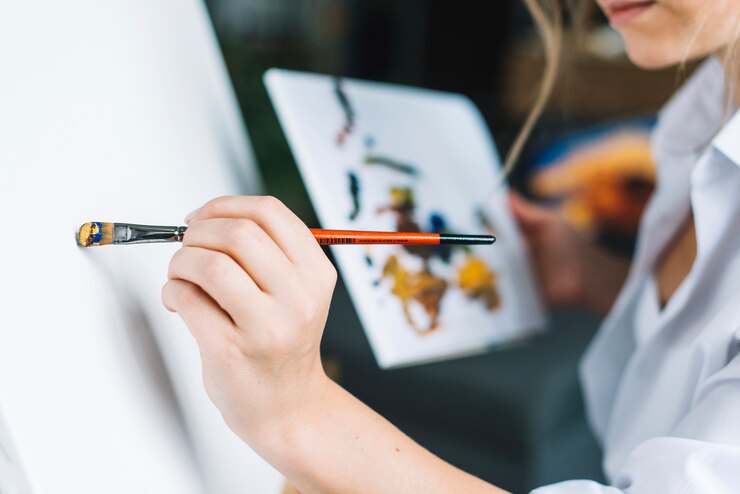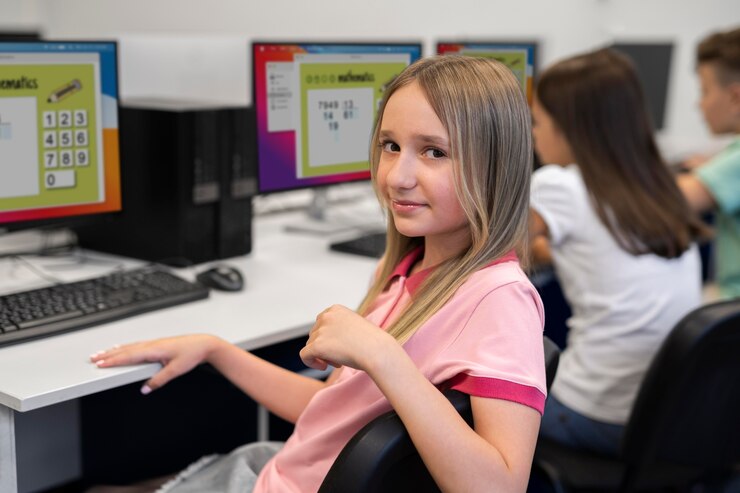Art is more than just a visual or auditory experience; it’s a profound teacher, whispering truths about life, creativity, and the human experience. Throughout history, art has served as a mirror to society, reflecting its values, struggles, and aspirations. Whether through painting, sculpture, music, dance, or literature, art conveys lessons that transcend time and culture, offering insights that are as relevant today as they were centuries ago. But what exactly can we learn from art? And how do these lessons shape our understanding of the world?
The Transformative Power of Creativity
Creativity is at the heart of all art forms, and it teaches us the value of thinking outside the box. Artists, whether painters, writers, or musicians, constantly push the boundaries of what is possible, exploring new techniques, ideas, and perspectives. This creative process is not just about producing something beautiful or meaningful; it’s also about personal growth and transformation.
Through creativity, art teaches us to embrace uncertainty and take risks. It shows us that failure is not the end but a step towards mastery and innovation. Just as an artist may experiment with different colors or mediums to find the right expression, we too must explore various paths in life to discover our true potential. In this way, art encourages us to be bold, to try new things, and to learn from our mistakes.
Art as a Reflection of Society
Art has always been a powerful tool for social commentary, reflecting the values, concerns, and aspirations of the society in which it is created. From the political murals of Diego Rivera to the thought-provoking installations of Ai Weiwei, artists have used their work to challenge the status quo and provoke discussion on critical issues.
Through art, we learn about the social and political climates of different eras, gaining insights into the struggles and triumphs of people across time. Art teaches us empathy by allowing us to see the world through the eyes of others, fostering a deeper understanding of diverse perspectives and experiences. This reflective quality of art makes it a vital component of cultural and historical education, reminding us of our shared humanity.
The Therapeutic Value of Art
Art has long been recognized for its therapeutic qualities. Engaging in artistic activities, whether painting, writing, or dancing, can be a powerful way to process emotions, reduce stress, and promote mental well-being. The act of creating art allows individuals to express feelings that may be difficult to articulate in words, providing a safe outlet for emotions and fostering self-awareness.
Furthermore, the experience of viewing art can also be therapeutic. Whether standing before a serene landscape painting or listening to a soulful piece of music, art has the ability to evoke emotions and bring about a sense of peace and calm. This therapeutic aspect of art highlights its importance not just as a form of self-expression but also as a tool for healing and personal growth.
Lessons in Patience and Persistence
Creating art often requires a significant investment of time and effort, teaching valuable lessons in patience and persistence. A sculptor may spend months or even years working on a single piece, meticulously carving every detail to perfection. Similarly, a writer may go through countless drafts before finally completing a novel. This process of creation teaches us that great things are rarely achieved overnight and that perseverance is key to success.
Art teaches us to appreciate the journey rather than just the destination. It reminds us that the process of working towards a goal, with all its challenges and setbacks, is just as important as the final outcome. This lesson is applicable not only in art but in all areas of life, encouraging us to stay committed to our goals and to keep pushing forward, even when the going gets tough.
The Universality of Artistic Expression
One of the most powerful lessons art teaches us is that creativity knows no boundaries. Across cultures and throughout history, art has been a universal language, capable of conveying complex ideas and emotions that transcend spoken or written language. Whether it’s the intricate patterns of Islamic calligraphy, the haunting melodies of a Japanese koto, or the vibrant colors of an African textile, art has the ability to communicate across cultural divides and connect people on a deep, emotional level.
This universality of art reminds us that, despite our differences, we share common experiences and emotions. It fosters a sense of global citizenship, encouraging us to appreciate and respect the diverse cultural expressions that make up our world. In a time when division and misunderstanding often dominate the global conversation, art serves as a powerful reminder of our shared humanity.
Embracing Imperfection and the Beauty of the Unfinished
Many famous works of art are celebrated not for their perfection but for their raw, unfinished qualities. Michelangelo’s “Unfinished Slaves” and Leonardo da Vinci’s “Adoration of the Magi” are prime examples of how the beauty of art can be found in its imperfections. These pieces, though incomplete, are revered for their ability to capture the essence of the human experience in all its complexity and imperfection.
This lesson from art teaches us to embrace imperfection in our own lives. It reminds us that the pursuit of perfection can sometimes be a barrier to creativity and self-expression. By accepting and even celebrating our flaws, we can free ourselves from the pressure to conform to unrealistic standards and instead focus on the unique qualities that make us who we are.
The Power of Storytelling in Art
Storytelling is a fundamental aspect of art, whether through the narrative of a novel, the plot of a film, or the visual story depicted in a painting. Art teaches us the power of storytelling to convey meaning, evoke emotions, and connect with others on a deep level. Through stories, artists can explore complex themes, challenge societal norms, and inspire change.
Artistic storytelling also teaches us the importance of perspective. A single story can be told in countless ways, depending on the viewpoint of the storyteller. This multiplicity of perspectives encourages us to consider different angles and interpretations, fostering open-mindedness and critical thinking. By understanding that there is more than one way to see the world, we become more empathetic and tolerant individuals.
The Importance of Observation and Attention to Detail
Artists are often keen observers of the world around them, paying close attention to details that others might overlook. Whether capturing the subtle play of light and shadow in a painting or the nuanced expressions of characters in a novel, art teaches us the value of observation and the importance of paying attention to the small things in life.
This lesson is particularly relevant in today’s fast-paced world, where we are often so focused on the big picture that we miss the beauty and significance of the details. Art reminds us to slow down, to take a closer look, and to appreciate the richness of our surroundings. By cultivating a habit of careful observation, we can enhance our understanding of the world and deepen our appreciation for the little things that make life meaningful.
The Role of Art in Shaping Identity
Art plays a crucial role in shaping both individual and collective identity. Through artistic expression, people can explore and define who they are, both as individuals and as members of a community. Whether through personal portraits, cultural symbols, or national monuments, art serves as a means of self-expression and a way to assert identity.
This lesson from art teaches us the importance of understanding and embracing our own identity, as well as respecting the identities of others. It encourages us to explore our own cultural heritage, to understand the influences that have shaped us, and to express our individuality through creative means. In a diverse and interconnected world, this understanding of identity is essential for fostering a sense of belonging and mutual respect.
Art as a Means of Communication
Art is a powerful form of communication that transcends language barriers and conveys messages that words alone cannot. Through visual, auditory, and performative means, artists can communicate complex ideas, emotions, and experiences in ways that resonate deeply with their audience. This communicative power of art is evident in everything from the political cartoons of the 18th century to the modern-day street art that adorns city walls.
This lesson from art teaches us the importance of finding ways to communicate effectively, even when words fail us. It reminds us that communication is not just about the literal meaning of words, but also about the emotions, intentions, and messages that lie beneath the surface. By learning to communicate through art, we can express ourselves more fully and connect with others on a deeper level.
The Connection Between Art and Nature
Many artists draw inspiration from nature, whether through landscape painting, nature photography, or environmental sculpture. This connection between art and nature highlights the importance of the natural world as a source of creativity and wonder. Through art, we learn to appreciate the beauty and complexity of nature, and to see the world around us with fresh eyes.
This lesson from art teaches us the value of reconnecting with nature and finding inspiration in the natural environment. It encourages us to spend time outdoors, to observe the patterns and rhythms of the natural world, and to incorporate these elements into our own creative practices. By doing so, we can enhance our creativity and develop a deeper appreciation for the planet we inhabit.
The Timelessness of Art
Art has the unique ability to transcend time, with works created centuries ago still resonating with audiences today. Whether it’s the timeless beauty of a Renaissance painting or the enduring appeal of a classical symphony, art connects us with the past while remaining relevant in the present. This timeless quality of art teaches us about the enduring nature of certain truths and values.
The lesson here is that while times may change, the fundamental aspects of the human experience remain constant. Art reminds us of the importance of preserving and passing down cultural traditions and knowledge, and it encourages us to create work that will stand the test of time. In this way, art serves as a bridge between generations, linking us to our ancestors and to future generations.
The Role of Art in Social Change
Throughout history, art has played a pivotal role in social change, serving as a catalyst for political movements, cultural shifts, and social reform. From the protest songs of the civil rights movement to the feminist art of the 1970s, artists have used their work to challenge injustice, inspire activism, and promote social change. This aspect of art teaches us about the power of creativity to influence society and drive progress.
The lesson from art is that we all have the ability to contribute to social change, whether through our creative work or our support of artistic initiatives that promote justice and equality. Art reminds us that change often begins with a single voice or a small action and that creativity can be a powerful tool for challenging the status quo and envisioning a better future.
The Influence of Art on Emotions
Art has a profound impact on our emotions, capable of evoking joy, sorrow, anger, or serenity with just a single image, sound, or movement. This emotional power of art teaches us about the depth of human emotions and the ways in which they can be expressed and understood. Through art, we learn to connect with our own emotions and to empathize with the experiences of others.
This lesson from art encourages us to explore and express our emotions more fully, whether through creative endeavors or simply by appreciating the art that moves us. It also reminds us of the importance of emotional intelligence and the need to understand and manage our emotions in a healthy and constructive way.
Art as a Form of Resistance
In times of oppression and censorship, art has often served as a form of resistance, allowing artists to express dissent and challenge authority in ways that might not be possible through other means. From the covert symbolism in Renaissance paintings to the bold street art of contemporary political movements, art has been a powerful tool for resisting tyranny and advocating for freedom.
The lesson here is that creativity can be a form of resistance, a way to challenge injustice and speak truth to power. Art teaches us that even in the face of adversity, we have the ability to create and communicate, to express our beliefs and to fight for what we believe in. This lesson is particularly relevant in today’s world, where freedom of expression is still under threat in many parts of the globe.
The Interplay Between Art and Technology
As technology has advanced, so too has the art world, with new tools and mediums emerging to expand the possibilities of creative expression. From digital painting and 3D printing to virtual reality installations and AI-generated art, the intersection of art and technology is a rich and exciting field that offers endless opportunities for innovation.
This lesson from art teaches us about the importance of embracing new technologies and exploring how they can enhance and transform our creative practices. It reminds us that innovation often comes from the fusion of different disciplines and that by staying open to new ideas and tools, we can continue to push the boundaries of what is possible in art and beyond.
The Role of Art in Education
Art is a vital component of education, offering students a way to explore their creativity, develop critical thinking skills, and engage with cultural and historical content in a meaningful way. Through art education, students learn not only about artistic techniques and history but also about the broader human experience and the role of creativity in society.
The lesson here is that art should be an integral part of the educational curriculum, not just as an extracurricular activity but as a core subject that fosters holistic development. Art teaches us to think critically, to solve problems creatively, and to appreciate the diverse ways in which people express themselves. In a rapidly changing world, these skills are more important than ever.
Art and the Human Condition
At its core, art is a reflection of the human condition, capturing the joys, sorrows, triumphs, and tragedies that define our existence. Whether through the portrayal of a single moment or the exploration of a broader theme, art offers a window into the human soul, revealing the complexities and contradictions that make us who we are.
This lesson from art teaches us about the importance of self-reflection and introspection. It encourages us to explore our own thoughts, feelings, and experiences, and to express them in ways that are true to ourselves. Art reminds us that we are not alone in our struggles and that by sharing our stories, we can connect with others and find meaning in the human experience.
Art as a Celebration of Life
Finally, art teaches us to celebrate life in all its forms. From the vibrant colors of a painting to the joyful rhythms of a dance, art is a celebration of the beauty, diversity, and complexity of life. It reminds us to appreciate the moments of joy and wonder that make life worth living and to find beauty even in the midst of struggle and hardship.
This lesson from art encourages us to live fully and to embrace the richness of our experiences, both good and bad. It reminds us that life is a work of art in itself, one that we create every day through our actions, choices, and expressions. By celebrating life through art, we can cultivate a deeper sense of gratitude, joy, and fulfillment.
FAQs
What can we learn from art? Art teaches us about creativity, empathy, patience, and the importance of self-expression. It reflects society, challenges norms, and offers insights into the human condition.
How does art influence our emotions? Art has the power to evoke a wide range of emotions, from joy to sorrow, by connecting with us on a deep, emotional level. This emotional impact helps us understand and process our own feelings.
Why is art important in education? Art education fosters creativity, critical thinking, and cultural awareness. It helps students develop a deeper understanding of the world and their place in it.
What is the role of art in social change? Art has historically been a catalyst for social change, challenging injustices, and inspiring activism. It continues to play a crucial role in advocating for freedom and equality.
How does art connect with nature? Many artists draw inspiration from nature, using it as a source of creativity and wonder. Art helps us appreciate the beauty and complexity of the natural world.
Why is imperfection celebrated in art? Imperfection in art is often seen as a reflection of the human experience. It teaches us to embrace our flaws and recognize the beauty in the unfinished and imperfect.
Conclusion
Art is more than just a form of entertainment or decoration; it is a profound teacher that offers valuable lessons about life, creativity, and the human experience. Whether through the bold strokes of a painter’s brush, the delicate notes of a musician’s melody, or the powerful words of a poet’s verse, art teaches us to see the world in new ways, to embrace our creativity, and to connect with others on a deeper level. By understanding and appreciating the lessons from art, we can enrich our lives, foster personal growth, and contribute to a more compassionate and creative world.











